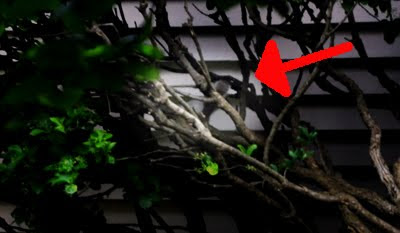Driving up the street in the morning or coming home after work. A small white flash set against the dark green of the well-kept lawn a few houses up. A furry blur shooting into the shrubbery or up the opposite side of a giant oak tree.
The first few times I saw him, I wasn't even sure it was real. A trick of the lighting perhaps. Maybe just a piece of litter or debris blowing in the wind. But I kept watching. I kept looking each time I drove by the house near the top of the hill until I was sure I saw him.
The white squirrel.
I'd never seen a white squirrel before. I named him Moby.
 Yes, you're correct, a reference to the squirrely white 1990s-era techno music artist. I vowed to capture the white squirrel no matter what it took. But first I hit up the internet for a bit of research on my quarry.
Yes, you're correct, a reference to the squirrely white 1990s-era techno music artist. I vowed to capture the white squirrel no matter what it took. But first I hit up the internet for a bit of research on my quarry.It turns out that, while rare and uncommon, white squirrels aren't unknown in North America.
Although these squirrels are commonly referred to as albinos, most of them are likely non-albino squirrels that exhibit a rare white fur coloration known as leucism that is as a result of a recessive gene found within certain Eastern gray squirrel (Sciurus carolinensis) populations, and so technically they ought to be referred to as white squirrels, instead of albino.Armed with this information, I set about my hunt. I kept my camera in my car, a 200 mm lens attached. And as I passed by the yard each day, I kept my eye out for the opportunity to finally take a shot at the elusive prey.
Dr. Michael Stokes, a biology professor at Western Kentucky University, commented that the probable cause for the abundance of white squirrels on university campuses was due to them being originally introduced by someone:We're not sure how they got here, but I'll tell you how it usually happens...When you see them, especially around a college campus or parks, somebody brought them in because they thought it would be neat to have white squirrels around.Dr. Albert Meier, another biology professor at Western Kentucky University, added that:…white squirrels rarely survive in the wild because they can't easily hide. But on a college campus, they are less likely to be consumed by other animals.
Finally, my patience was paid off.
 Here you can clearly see Moby's fluffy tail as he flees for cover in the shrubs at the side of the house.
Here you can clearly see Moby's fluffy tail as he flees for cover in the shrubs at the side of the house.Okay, as I look at that picture now, I can see that it might not be as clear to everyone where Moby is. Let me zoom it in a little for you...
 There. See the tail sticking out from behind a branch? No? Still having trouble? Let me try this...
There. See the tail sticking out from behind a branch? No? Still having trouble? Let me try this... Okay. Perhaps the photographic evidence isn't yet as clear as I had thought.
Okay. Perhaps the photographic evidence isn't yet as clear as I had thought.But believe me, this isn't over. I shall not give up my hunt for the White Squirrel. I'll follow him into the neighbor's back yard if I have to. I'll follow him around the Horn, and around the Norway maelstrom, and around perdition's flames before I give him up.
tagged: white, squirrel, Moby, suburban, wildlife, animals, Johnson County, Kansas

Clearly you've never heard of Marionville, MO (20 min. SW of Springfield), the HOME of the White Squirrel.
ReplyDeletehttp://www.marionvillemo.com/
Check it. I can verify (being from those parts) that they are everywhere. As are the grey squirrels.
When you've finished bagging that quarry, I've got some snipe I need to get rid of.
ReplyDeleteCheers.
We had a light-colored squirrel in our yard years ago when there was still a bird feeder available to be raided. I haven't seen one for a long time, though.
ReplyDelete@AverageJane,
ReplyDeleteJust to be clear, this isn't a "light-colored" squirrel. This thing is white. I'm taking ranch dreassing-eating, CPA Donnie Osmond wearing khakie pants at a Cribbage tournament white.
We have Albie (albino, named by my daughters) at 119th and State Line. I didn't believe it at first, but he is here.
ReplyDelete